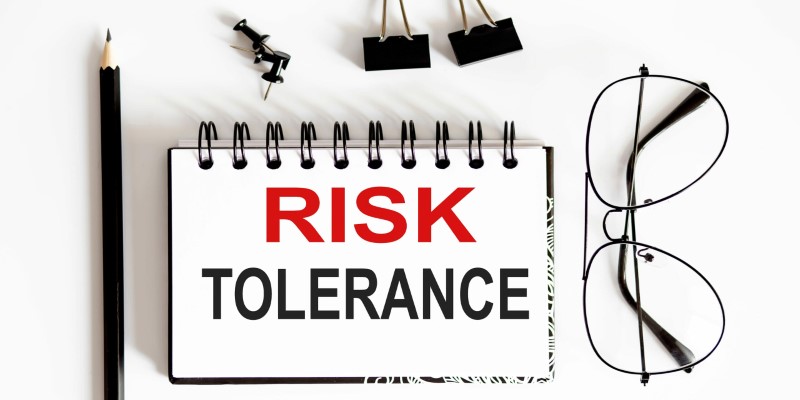Advertisement
Certificates of Deposit (CDs) are often considered one of the safest investment options available. Many people view them as a risk-free way to grow their savings while earning a stable, predictable return. However, like any financial product, they come with their own set of risks. Understanding these risks is essential before committing your money to a CD.

This article will delve into how risky Certificates of Deposit really are and help you make an informed decision about whether they are a suitable investment for you.
Before we get into the risks of CDs, it's important to know what they are. A Certificate of Deposit is a time bound deposit offered by banks and credit unions. The bank gives you an interest rate that's usually higher than what you'd get from a normal savings account in exchange for tying up your money for a specific time period (often anywhere from a few months to a few years). The catch is that you can't access your funds until the maturity date, though, without a penalty.

Because they are issued by federally insured banks and credit unions, many consider them low risk investments. For those who wish to invest to conserve capital and earn a tiny yield, these look like a safe bet.
Despite the safety net of FDIC (Federal Deposit Insurance Corporation) insurance, there are still several risks that investors should consider when it comes to CDs.
Inflation is one of the biggest risks Certificates of Deposit pose. That means the purchasing power of your money will be eroded over time by inflation, and if the interest rate you earn on your CD is less than the rate of inflation you could really lose money. For example, if your CD is producing a 3 percent annual interest rate but inflation is 5 percent, your actual investment is really evaporating.
That's especially an issue for longer term CDs. For example, if you lock your money up in a long term CD at a fixed rate, and inflation rises during that time, you may find your returns don't keep up with rising costs.
Another risk tied to CDs is interest rate risk. This is the risk that the prevailing interest rates in the market will change in a way that makes your investment less attractive. If interest rates rise after you lock in your CD, you may miss out on higher returns. Conversely, if rates fall, your fixed-rate CD might still offer a competitive return compared to new investment options.
For example, if you locked in a 3% return on a 5-year CD and interest rates rise to 4% or 5% shortly after, you’d be stuck with the lower rate for the duration of your term.
Liquidity refers to how easily you can access your money when you need it. With a CD, liquidity is limited because your money is tied up for a set period. If you need to withdraw the funds before the CD matures, you’ll likely incur a penalty, which could eat into the interest you earned or even part of your principal.
For example, if you invested in a 2-year CD but unexpectedly need the funds for an emergency, you might face a penalty that’s equal to several months of interest. In some cases, the penalty could be large enough to make it not worth withdrawing early.
While CDs are generally considered low-risk because banks issue them, there's still some level of credit risk involved. If the financial institution you invested with goes bankrupt, you might lose your investment. However, this risk is minimized by the FDIC insurance, which covers up to $250,000 per depositor per bank.
That said, if you have more than the insured limit deposited in one institution, anything above that is not protected. In such cases, it's crucial to ensure that you spread your deposits across multiple institutions if you have large amounts of money in CDs.
Despite the risks, Certificates of Deposit can still be a useful tool in an investor’s portfolio. They are often best suited for conservative investors who prioritize stability and preservation of capital over higher returns. They can also work well for people who have specific savings goals, such as funding a child’s education or saving for a down payment on a home.

CDs are also appealing for those who don’t need immediate access to their funds and can afford to lock in their money for a set period. The predictable, fixed return offers peace of mind, knowing exactly how much you'll have at maturity.
While Certificates of Deposit may seem like low-risk investments, you can take steps to reduce the risks further. Here are a few strategies that might help:
One way to reduce interest rate and liquidity risks is by using a technique called "laddering." This involves spreading your investments across multiple CDs with different maturity dates. For instance, you might invest in a 1-year, 2-year, and 3-year CD. As each CD matures, you can reinvest the proceeds into a new CD with a longer term. This allows you to take advantage of rising interest rates while maintaining some liquidity in case you need access to funds.
To reduce credit risk, you can diversify your investments by spreading them across different banks. As mentioned earlier, FDIC insurance only covers up to $250,000 per institution. By using multiple banks, you can ensure that all of your investments are fully protected.
Certificates of Deposit are often marketed as one of the safest investment options available, but they do come with their own set of risks. While they are low-risk compared to other investments, such as stocks or bonds, they are not entirely risk-free. Inflation, interest rate changes, liquidity issues, and credit risk are all factors that can impact the performance of a CD.
Advertisement

By Madison Evans/Jan 03, 2024

By Tessa Rodriguez/Jan 14, 2025

By Noa Ensign/Nov 08, 2024

By Gabrielle Bennett /Jan 14, 2025

By Georgia Vincent/Mar 17, 2025

By Aldrich Acheson/Mar 17, 2025

By Sid Leonard/Mar 17, 2025

By Triston Martin/Mar 17, 2025

By Celia Shatzman/Mar 18, 2025

By Elena Davis/Mar 16, 2025

By Mason Garvey/Mar 16, 2025

By Noa Ensign/Mar 18, 2025